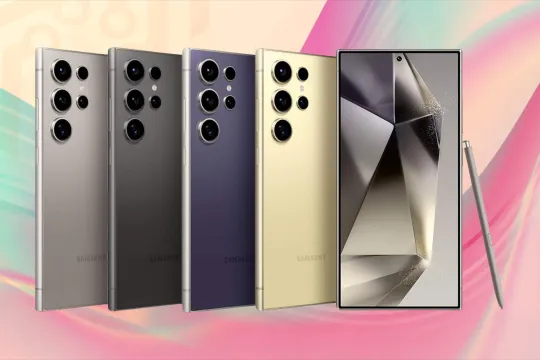
We know that the functionality that helps take screenshots on our devices is very convenient and allows sharing our screens. Maybe it is needed to "capture" the right moment in real-time or to explain to the support service a problem that takes a lot of time to describe in words. The knowledge and ability to do this will always come in handy and help you quickly save the info you need from your screen.
With the help of guides for Windows and MacBook devices, we already know how to do it on gaming or work devices, but how to do it on a phone. How to take a screenshot on Android, and iOS, which buttons to press or which gestures will help? Let's figure it out.
How to take a screenshot on Android
In general, Android screenshot functionality has hardly changed over the years, and has similar instructions, with some differences at particular Android smartphone manufacturers. The difference is in the button's location, or additional methods, such as gestures or phrases, may differ. To prepare you for taking a screenshot, I have separately added an image with the layout of the buttons and I noticed them with numbers on the images.
All Android Phones
On all Android phones from v4.0 onwards, a universal key combination exists for capturing screenshots. This method is universally applicable across devices from any manufacturer. To take a screenshot, simultaneously press and hold the Power and Volume down buttons for approximately 2 seconds until you hear the distinctive camera shutter sound. (image 1 or 2)
Subsequently, the screenshot will be displayed in the Photos app or Gallery in the oldest versions. Access it swiftly by tapping on the thumbnail at the screen's top/bottom (depending on the model) or the corresponding icon in the notification shade.
For a scrolling screenshot on Android 12 and newer devices, open the desired screen, press the Power and Volume down buttons simultaneously, then tap Capture More at the bottom. Use the crop guidelines to choose the content you want to capture.

Samsung
Just like on many Android devices, to take a screenshot on a Samsung, you need to simultaneously press the Volume Down button and the side Power button (1-2 image above). The screen will flash, indicating that the screenshot has been taken. This combination works for both phones and tablets. For some older models with a Home button, you need to press the Home button and the side Power button (image 3 below).
Some Samsung devices support the ability to take screenshots with the palm swipe. Simply swipe your palm across the screen of your Samsung device (image 4 below).

To utilize the S Pen on your Samsung devices, follow the next steps. The Smart Select method applies to all Samsung devices with an S Pen. Begin by removing the S Pen to activate the Air command menu. Next, tap on Smart Select. Then, choose the tool that best fits your needs - whether it's the rectangle, oval, or lasso. Now, draw around the area you want to capture. Finally, select Save to store your screenshot or Draw if you wish to make further modifications.
Right after taking a screenshot, a taskbar will pop up at the bottom. Choose Edit to write or draw on the screenshot, crop it, or add hashtags. Click the #Hashtag icon to add suggested or custom hashtags. Hit Share to send the screenshot instantly.
If you want to capture a scrolling screenshot you need to allow a toolbar after capturing. For this go to Settings > Advanced features > Screenshots and screen recorder > Screenshots and screen recorder and check that the toggle is On.
To capture a screen, follow these steps: Open the desired screen, then press the Power and Volume Down buttons simultaneously, or use your palm swipe feature. Tap the icon with two downward arrows in the screenshot preview toolbar. Hold down the double arrow icon and scroll to capture the desired area. Release the icon to stop capturing and save the screenshot.

To use the Screen Recording feature on your Samsung device, start by enabling it in the Settings menu. Also, look for Advanced features > Screenshots and screen recorder > Screen recorder. Enable the feature using the switch. Modify settings by tapping Settings near the screen recorder toggle. To start recording, swipe screen downward to access Quick Settings, tap Screen Recorder icon, and stop by tapping Stop in the notification panel. Recordings are saved in the Gallery app's Screen Recordings folder.
Not all Samsung devices have a built-in screen recording feature. To check, go to Settings > Advanced features. If you see Screen Recorder your device supports this feature. If not, use the Game Launcher or Game Booster app to record gameplay.
How To Record Screen on Android
How to record your phone screen on Android smartphones. To initiate the screen recording function, swipe down from the top of your screen and tap on Screen Record. If you can't locate it immediately, swipe right until you find it, or customize your Quick Settings by tapping Edit and dragging Screen Record. Select the content to record, tap Start, and the recording will commence after a brief countdown. Before starting, you have the choice to record audio and display touches on the screen. To end the recording, swipe down from the top of the screen and tap the Screen Recorder notification. Access your screen recordings in the Photos app under Library and then Movies.
Google Pixel
To capture a screenshot on your Pixel phone or tablet, first open the screen you wish to capture. Then press the Power and Volume Down buttons simultaneously. This will generate a screenshot and save it on your device. You will see a screenshot preview at the bottom left of your screen. Alternatively, you could simply command, "Hey Google, take a screenshot".
To take a scrolling screenshot (this only works on devices running Android 12 and up), once again open the screen you want to capture and press the Power and Volume down buttons together. Then tap on Capture More at the bottom of your screen. To select the content you wish to grab, just use the crop guidelines provided.
If you prefer to take a screenshot without using buttons, based on your navigation type, you can do this as well. For Gesture navigation, swipe up from the bottom of your screen and hold. From the open apps displayed, select the one you want to screenshot and tap Screenshot. For 3-button navigation, tap Overview, choose an open app, and tap Screenshot.

How To Manage Screenshots on Android
To find and manage your screenshots on your Android device, you can either use the Gallery app or the Files app. For the Gallery app, just open it up, this could also be called Photos depending on your device. Once open, look for a folder called Screenshots where all your saved screenshots are stored. Alternatively, open the Files app, which might have a different name like My Files. In this app, go to the Pictures or Images folder and search for a subfolder named Screenshots. You'll know these are screenshots by checking the filenames as they usually indicate that they are screenshots like "Screenshot_20240306".
How to take a screenshot on iPhone
- To screenshot on iPhone 14 or models with Face ID: Press Side and Volume up buttons simultaneously, and release quickly. View or dismiss by tapping/swiping the thumbnail that appears (image 1 below).
- To take a screenshot on iPhone models with Touch ID and a Side button: press both buttons together, then quickly release. View the screenshot thumbnail in the lower-left corner by tapping or swiping left (image 2 below).
- On iPhones with Touch ID and a Top button: Simultaneously press the top and Home buttons to take a screenshot. Release immediately. The thumbnail appears briefly, tap to open or swipe left to dismiss (image 3 below).
More info about screenshots on iPhone by link.

Scrolling Screenshot on iPhone
Starting from iOS 14, it's easy to take scrolling screenshots on Apple smartphones. It's worth noting that the built-in feature only works with web pages, documents, and email. Take a screenshot as usual, then tap the preview at the bottom of the screen and switch to Full Page mode. If needed, crop the screenshot vertically by tapping the crop button. Tap Done and choose to Save to Photos or Save PDF to Files. This feature has been available only since iOS 17, but the oldest versions have just PDF saving options.
Where To Find iPhone Screenshots
To access Photos, navigate to Albums > Media Types > Screenshots.
How To Record Screen on iPhone
Image: Apple Support
To successfully record your iPhone screen, adhere to these clear steps:
- Begin by going to Settings > Control Center, then tap the Add button beside Screen Recording.
- Access the Control Center on your iPhone.
- Press the gray Record button and await a 3-second countdown.
- Exit the Control Center to commence your screen recording.
- To stop recording, tap the Screen Recording button at the top of your screen, then hit Stop. Alternatively, you can stop via the Control Center by tapping the red Record button.
Remember, certain apps may restrict audio or video recording, and screen mirroring prevents screen recording. Once completed, locate your screen recording in the Photos app.
Conclusion
So, as you can see, taking a screenshot is not so difficult, and you can instantly share your screen with friends or colleagues. In most cases, there is no need to use third-party apps for this today. All you need for this is to remember simple button combinations for your Android or iPhone.
You Also May Interested
All Tesla Models Covered: Rear Seat Entertainment Solutions Found
We found rear-seat entertainment solutions for all Tesla models in 2024. Explore multimedia options for Tesla Model 3 and Y and accessories for all models.
Detail-oriented editor aiming for excellence. I keep up with web dev, gaming, and tech trends in my free time and write about



